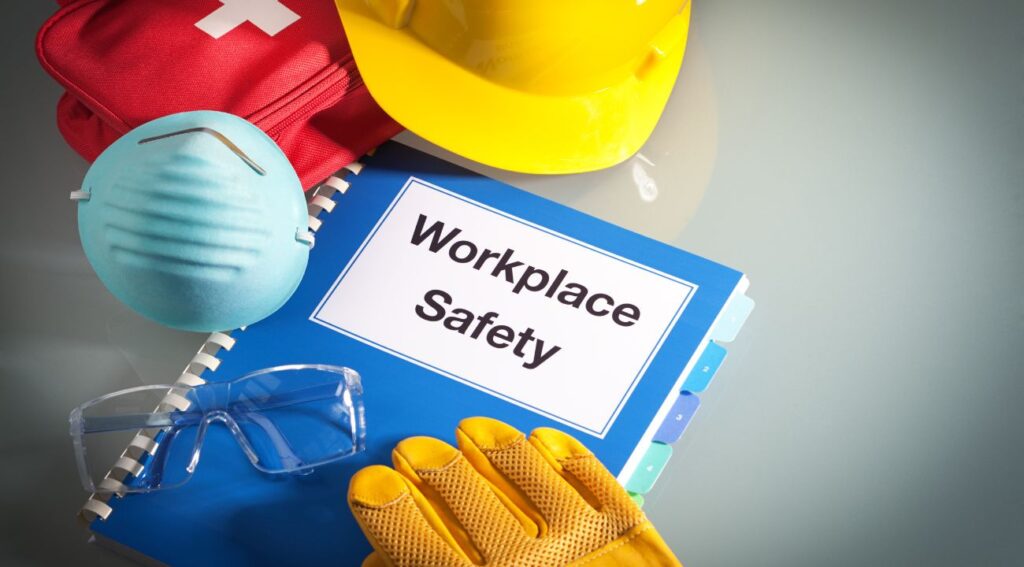The Importance of Workplace Safety
The significance of workplace safety is multifaceted, encompassing the moral obligation to care for one’s employees, the legal imperative to abide by safety regulations, and the economic wisdom to prevent costly accidents and associated downtime. By prioritizing safety, employers can not only avoid the direct costs of workplace incidents but also preserve the intangible assets of employee trust and company reputation.
Creating a safe work environment is a proactive measure. It involves identifying potential risks, training employees to deal with them effectively, and fostering a culture where safety is woven into the very fabric of the organization. This proactive approach not only minimizes the risk of accidents but also promotes a more engaged and productive workforce.
How do Workplace Accidents Affect Employers and Employees?
Despite the best efforts to maintain a safe workplace, accidents can still occur. Slips, trips, and falls are among the most common incidents, often resulting in injuries that can range from minor bruises to serious fractures or even long-term disability. Further, mishandling of machinery and equipment can lead to catastrophic accidents, sometimes with fatal outcomes.
-
-
- Impact on Employees: For the injured party, it can mean enduring pain, undergoing treatment, and potentially facing a lengthy recovery period. There’s also the emotional and psychological toll that an accident can take, not just on the injured worker but on their colleagues as well.
- Consequences for Employers: From an employer’s perspective, accidents can disrupt operations, leading to lost productivity and increased insurance premiums. There’s also the potential for legal action if negligence is found to be a contributing factor.
-
The costs associated with workplace accidents underscore the need for diligent safety practices.

STEP 1: Identifying and Assessing Workplace Hazards
The process of identifying potential hazards requires a thorough examination of the entire work environment, including equipment, materials, work processes, and employee behaviors. It’s important to approach this task with a critical eye and consider, not just the obvious risks, but also those that might not be immediately apparent.
Once identified, each hazard must be assessed for its potential impact. This involves determining the likelihood of an accident occurring and the severity of the consequences should it occur. By assessing hazards, employers can prioritize safety efforts and allocate resources to mitigate the most significant risks.
Regular hazard assessments are vital as workplaces evolve. New equipment, changes in processes, or the introduction of new materials can all introduce fresh hazards that need to be identified and managed promptly.
STEP 2: Implementing Safety Procedures and Protocols
With hazards identified and assessed, the next step is to implement procedures and protocols aimed at mitigating risk. This includes establishing clear guidelines for safe operation of machinery, handling of materials, and execution of work tasks. Procedures should be documented, easily accessible, and regularly reviewed to ensure they remain effective and relevant.
Protocols must also be in place for responding to emergencies. Whether it’s a medical incident, a fire, or a chemical spill, having a well-rehearsed plan ensures that everyone knows their role and can act quickly to minimize harm.
The implementation of these safety measures should not be seen as a one-time exercise. It requires ongoing attention and adaptation to ensure that as new risks emerge, new procedures and protocols are established to counter them.
STEP 3: Knowledge Can Prevent Accidents
Providing comprehensive safety training and education ensures that employees are aware of potential hazards and know how to avoid them. Training should cover the proper use of equipment, emergency procedures, and correct handling of hazardous materials, among other things.
Education also extends to health and wellness. Informing employees about the importance of ergonomics, proper lifting techniques, and general health can prevent injuries and illnesses that might not be immediate but can have long-lasting effects.
Training should not be a one-time event. Regular refreshers and updates are necessary to keep safety at the forefront of employees’ minds and to address any new risks that may arise. Employers should also encourage employees to seek out additional training and provide opportunities for them to do so.
STEP 4: Regular Inspections and Maintenance
Inspections help identify potential equipment failures or structural issues that could pose a risk to workers, allowing for proactive repairs or replacements before an accident occurs.
Maintenance is equally important. Equipment and machinery should be serviced according to the manufacturer’s recommendations, and any faults should be addressed immediately. Neglecting maintenance can lead to equipment malfunctions, which not only pose a safety risk but can also result in costly downtime.
Records of inspections and maintenance activities should be meticulously kept. These records not only provide a history of the equipment’s condition but also serve as evidence of the employer’s commitment to safety, which can be crucial in the event of an incident.
STEP 5: Reporting and Investigating Accidents
Despite all precautions, accidents can still occur. When they do, it’s crucial to have a solid process in place for reporting and investigating these incidents. Reporting should be straightforward and free from repercussions, encouraging employees to come forward with information about any accidents or near-misses.
Investigations should aim to uncover the root cause of the accident, rather than assigning blame. By understanding what went wrong, employers can take steps to prevent similar incidents in the future. Investigations should be thorough and include input from those involved and witnesses, as well as an examination of any physical evidence.
The findings from these investigations should be shared with all employees, highlighting the lessons learned and the changes implemented to prevent recurrence. Open communication about accidents reinforces the importance of safety and demonstrates the employer’s commitment to continuous improvement.
The Role of Employers in Supporting Injured Workers
When an employee is injured, the employer’s role extends beyond the initial response to the accident. Supporting injured workers through their recovery and return to work is a critical aspect of workplace safety. This support can include ensuring access to medical care, providing modified duties or accommodations as needed, and maintaining open lines of communication throughout the recovery process.
Employers should also work with their workers’ compensation provider or equivalent to ensure that the injured employee receives all entitled benefits. Navigating the aftermath of a workplace injury can be overwhelming for the worker, and having the employer’s assistance can make a significant difference.
By supporting injured workers effectively, employers can facilitate faster recoveries, improve morale, and reduce the likelihood of long-term disability. It also sends a strong message to all employees that their well-being is a top priority for the organization.

